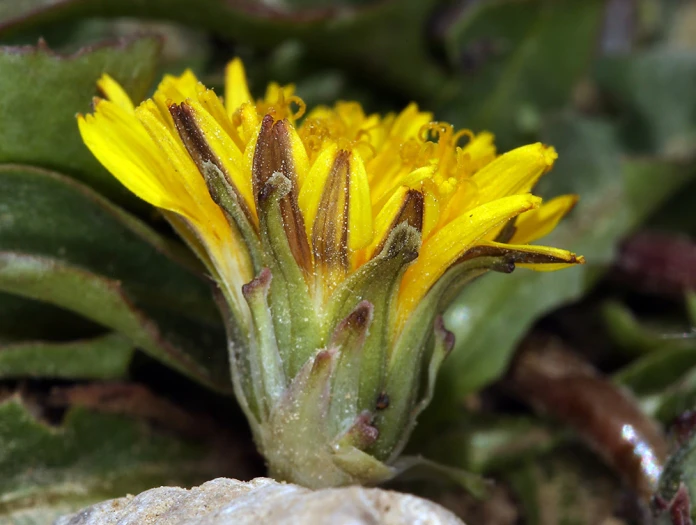Horned Dandelion
(Taraxacum ceratophorum)
Horned Dandelion (Taraxacum ceratophorum)
/
/

Steve Matson
CC BY 4.0
Image By:
Steve Matson
Recorded By:
Copyright:
CC BY 4.0
Copyright Notice:
Photo by: Steve Matson | License Type: CC BY 4.0 | License URL: http://creativecommons.org/licenses/by/4.0/ | Rights Holder: Steve Matson | Publisher: iNaturalist | Date Created: 2016-07-31T10:21:32-07:00 |

























Estimated Native Range
Climate Requirements for Daly City, California
| This Plant | Your Site | Plant Suitability for Your Location | ||
|---|---|---|---|---|
| • Precipitation | 4" - 168" | 30" | Your precipitation may be too high for this plant. | Too high |
| • High Temp. | 33°F - 96°F | 72°F | Your summer temperatures are normal for this plant. | Excellent |
| • Low Temp. | -54°F - 34°F | 44°F | OK, but your winter temperatures are warmer than normal for this plant | OK |
This plant may not grow well at your location - your precipitation is too high.
Summary
Taraxacum ceratophorum, commonly known as the horned dandelion, is a herbaceous perennial native to alpine and subalpine zones in temperate regions of Asia, Europe, and North America. It is specifically adapted to high elevations, often found at heights up to 9843 feet (3000 meters). In its native habitat, it occupies alpine meadows, fellfields, and rocky slopes where it endures cold temperatures and high levels of sunlight exposure. This species typically grows 2 to 12 inches tall and is characterized by its rosette of basal leaves with deeply lobed margins. The distinctive yellow flowers emerge on hairy stems and are most notable for their horn-like bracts, which are more pronounced than those of other dandelions. Flowering occurs from late spring to early summer, depending on elevation and latitude.
The horned dandelion is valued for its resilience in harsh alpine conditions and its ability to add color to rock gardens and wildflower meadows. It is often used in native plant gardens and restoration projects within its range. The plant prefers well-drained soils and can tolerate a range of moisture conditions from moist to dry. It requires full sun to light shade and is relatively low maintenance once established. While not commonly affected by diseases, it can be susceptible to root rot in overly wet conditions. The horned dandelion is not typically associated with aggressive roots or invasiveness, making it a safe choice for most garden settings.CC BY-SA 4.0
The horned dandelion is valued for its resilience in harsh alpine conditions and its ability to add color to rock gardens and wildflower meadows. It is often used in native plant gardens and restoration projects within its range. The plant prefers well-drained soils and can tolerate a range of moisture conditions from moist to dry. It requires full sun to light shade and is relatively low maintenance once established. While not commonly affected by diseases, it can be susceptible to root rot in overly wet conditions. The horned dandelion is not typically associated with aggressive roots or invasiveness, making it a safe choice for most garden settings.CC BY-SA 4.0
Plant Description
- Plant Type: Herb
- Height: 0.5-1.5 feet
- Width: 0.5-1 feet
- Growth Rate: Moderate
- Flower Color: Yellow
- Flowering Season: Spring, Summer
- Leaf Retention: Deciduous
Growth Requirements
- Sun: Full Sun, Part Shade
- Water: Medium
- Drainage: Medium, Fast
Common Uses
Bee Garden, Low Maintenance
Natural Habitat
Native to alpine and subalpine zones in temperate regions of Asia, Europe, and North America, occupying alpine meadows, fellfields, and rocky slopes
Other Names
Common Names: Common Dandelion, Ceratophorum dandelion, Woolbearing Dandelion, Horn-Bearing Dandelion, Northern Dandelion, Rough Dandelion
Scientific Names: Taraxacum ceratophorum, Leontodon ceratophorus, Leontodon dumetorum, Leontodon eriophorus, Taraxacum alaid-litorale, Taraxacum altaicum, Taraxacum ambigens var. flutius, Taraxacum ambigens var. fultius, Taraxacum angulatum
GBIF Accepted Name: Taraxacum ceratophorum